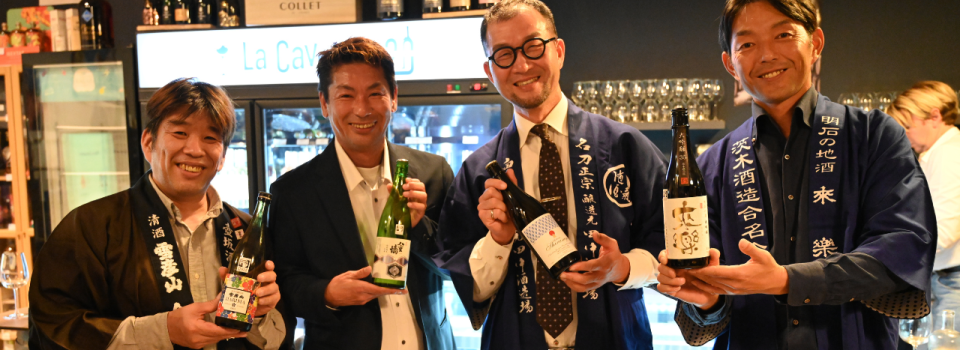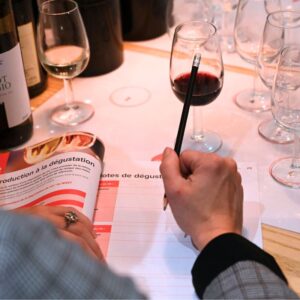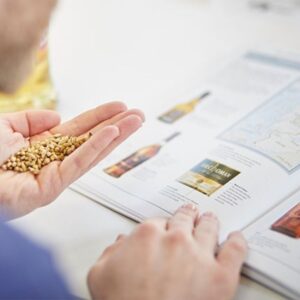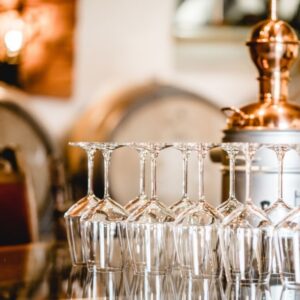Harima sake is attracting growing interest among connoisseurs, sommeliers, and wine professionals worldwide. Located in Hyogo Prefecture, the Harima region stands out for its unique terroir, exceptionally pure water sourced from five rivers, and centuries-old craftsmanship, producing premium Japanese sake with rich, refined aromatic profiles.
But what makes Harima Japanese sake so special? Unlike other regions, sake production in Harima combines strict traditional techniques with meticulous selection of raw materials, including a local sake rice variety, Yamada Nishiki, and fermentation methods adapted to the region’s specific climate and soil conditions. This approach gives Harima sake a perfect balance of finesse, aromatic complexity, and terroir expression.
Notably, GI Harima is the only Japanese sake geographical indication (GI) in Japan that mandates the use of a specific rice variety cultivated within the Harima region.

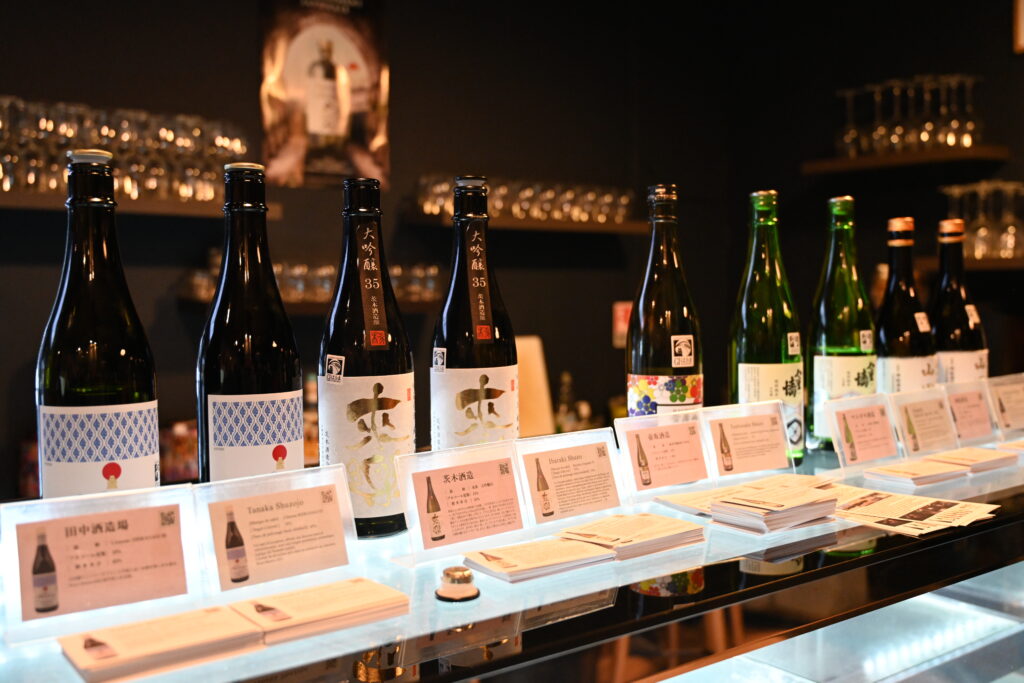
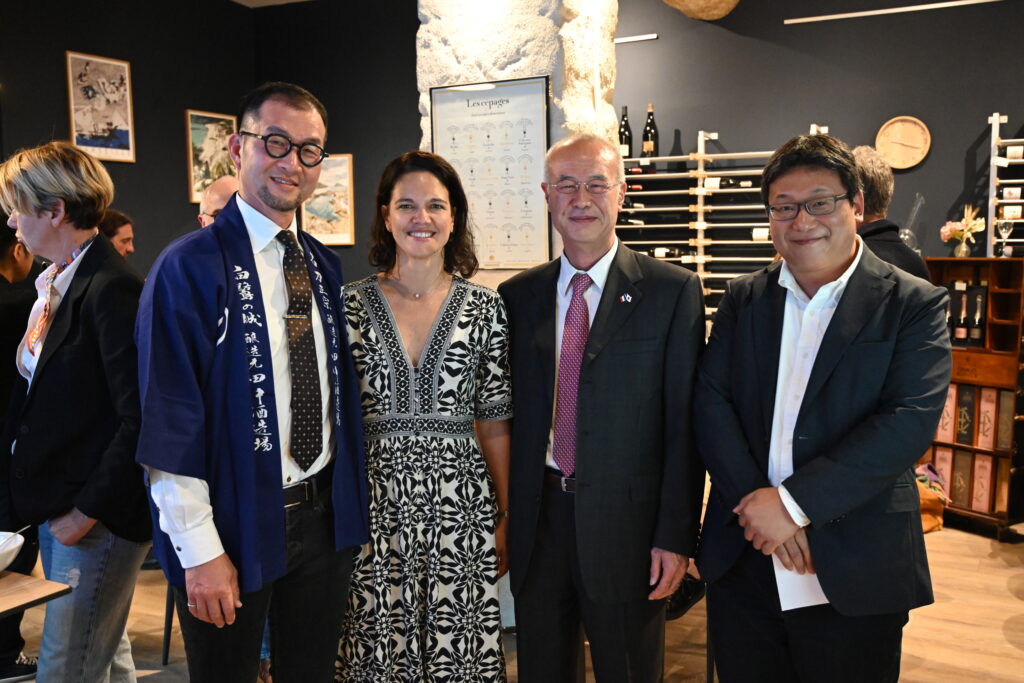
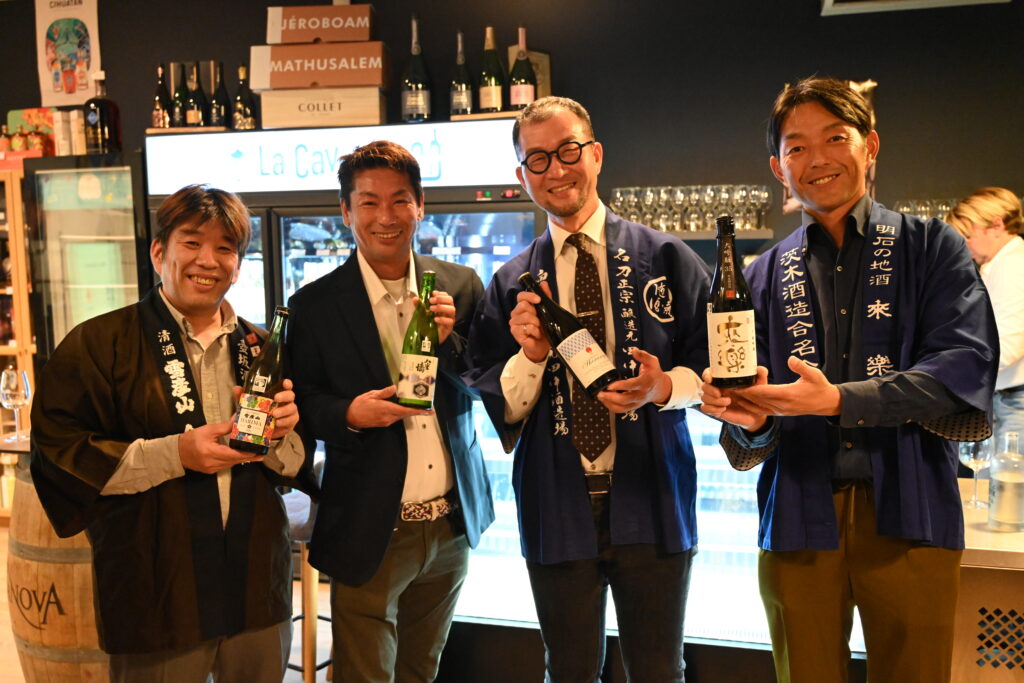
On Friday, October 3, 2025, Weeno in Marseille had the privilege of hosting an exceptional event dedicated to the art of Japanese sake. Three producers from the Harima region, accompanied by representatives of the GI Harima appellation, honored us with their visit.
Alongside the Consul General of Japan and his spouse, we shared an evening of discovery, conviviality, and cross-cultural dialogue—a rare moment where Marseille truly embraced Japanese culture.
In this article, we offer a comprehensive overview of the Harima sake terroir, its history, and production methods. We will also introduce three sake producers from the region: Tanaka Shuzojo, Ibaraki Shuzo, and Tsubosaka Shuzo.You will also learn why training in Japanese sake with Weeno, and obtaining WSET Level 1 and 2 certifications in Japanese sake, is an essential advantage for any professional looking to enhance their expertise and develop tasting and critical analysis skills.
1. History and origins of Harima Sake
Harima sake has its roots in the historic province of Harima, located in Hyogo Prefecture, Japan. This region benefits from an exceptional terroir: fertile soils, a temperate climate, and exceptionally pure water sourced from five surrounding rivers. These elements have been essential in supporting the development of sake production in Harima over several centuries.
The history of sake in Harima dates back at least to the 16th century, with the emergence of the first artisanal breweries. These establishments employed traditional Japanese techniques, passed down through generations, shaping the unique style of Harima sake. Local expertise gradually evolved, combining natural fermentation, mastery of water usage, and careful selection of local sake rice varieties, allowing Harima to distinguish itself among Japan’s sake-producing regions.
Harima is not only renowned for the quality of its sake: it is also home to one of Japan’s cultural treasures, Himeji Castle, famously known as the “White Heron” (Shirasagi-jō). Built in the early 17th century, this samurai castle is one of the oldest and best-preserved in Japan. Classified as a UNESCO World Heritage Site, it is considered the archetype of Japanese feudal architecture, symbolizing elegance, strength, and harmony.
Its pristine silhouette, with layered roofs resembling the outstretched wings of a heron about to take flight, embodies purity, grace, and protection. These values resonate deeply in Harima’s culture, where sake was historically offered to celebrate peace, prosperity, and the continuity of families.
Surrounding the castle, Himeji’s historic districts once housed sake brewers and rice merchants, whose activities supported the local fiefdom. Rice cultivated on Harima’s fertile plains, irrigated by rivers descending from the Rokko Mountains, was used both to feed the population and to produce sake for samurai and religious ceremonies.
Thus, Himeji Castle and Harima sake share a common history of excellence and deep local roots: a Japan where art, discipline, and nature coexist in an almost sacred balance.
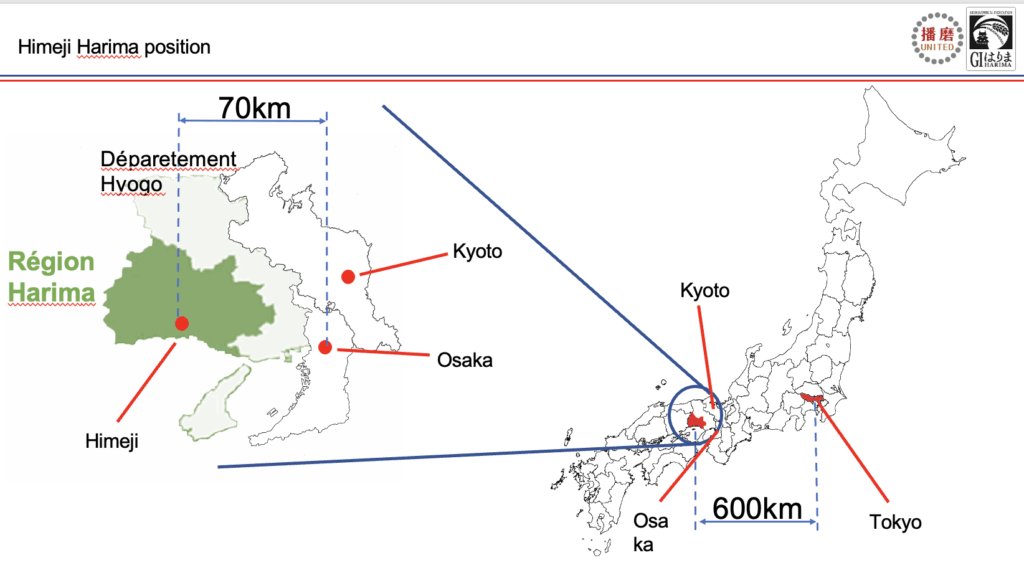
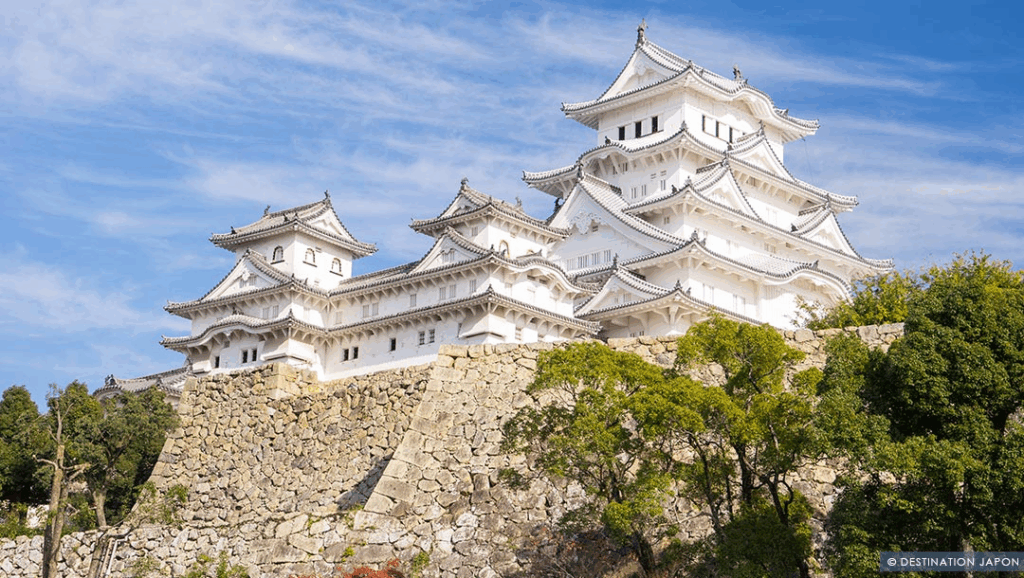
2. Anecdotes and local culture
Harima sake is more than an exceptional beverage: it reflects a lifestyle, a terroir, and a seasonal rhythm deeply rooted in Japanese culture. Historically, it was served during local festivals (matsuri), Shinto ceremonies, and official banquets marking major milestones in community life.
Some family-owned breweries in Harima still preserve production methods that are centuries old, including the use of traditional presses. These techniques are passed down through generations with the same rigor as in the shrines where sake was once offered to the divinities.
Every autumn, following the rice harvest, the sake brewing season begins — a period of activity celebrated throughout Japan. When the new sake, known as shinshu or aragoshi, is ready, it is enthusiastically tasted at the beginning of spring, especially during popular events like the Shinshu Matsuri or the Hanami, the cherry blossom festival. These occasions symbolize the rebirth of nature and the spirit of sharing, values that are central to the philosophy of sake.
Today, Harima Japanese sake is renowned for its refinement, aromatic complexity, and faithful expression of terroir, attracting both enthusiasts and professionals eager to discover authentic and iconic products from Japan.
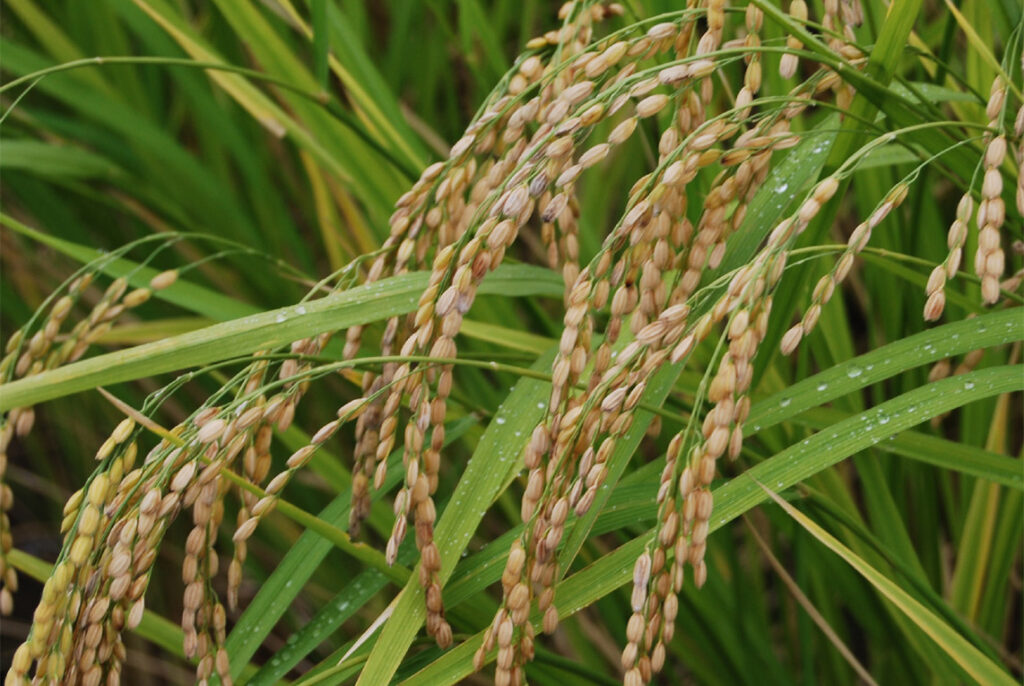
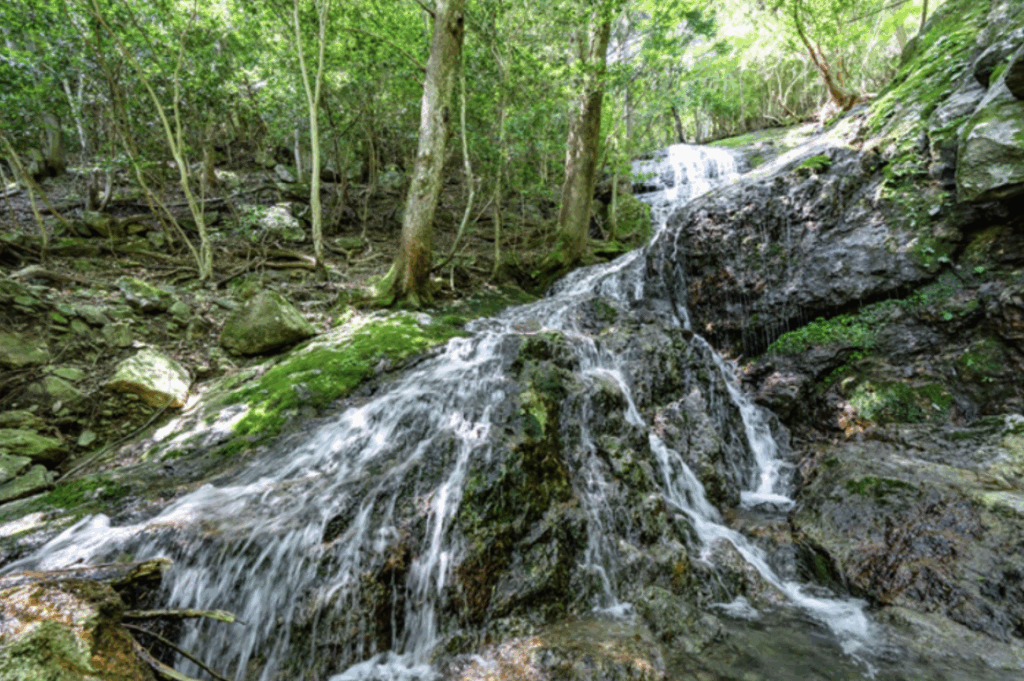
3. Terroir and raw materials
The terroir of Harima plays a central role in the quality and style of sake produced in this region. Every natural element contributes to shaping the typicity and finesse of Harima sake.
Harima water: purity and mineral balance
Water is a fundamental ingredient in sake production. The Harima region benefits from exceptionally pure water, rich in balanced minerals, ideal for fermentation.
This water directly influences the taste and texture of the sake, providing freshness, roundness, and aromatic balance to local productions.
Sake rice: an emblematic variety
The choice of rice is also crucial for sake quality. In Harima, breweries use the renowned sake rice variety, Yamada Nishiki, often called the “Prince of Sake Rice,” perfect for producing premium sake.
Locally grown, these rice varieties allow producers to master the texture and aromatic profiles of their sake while respecting traditional methods.
Climate and soil: impact on fermentation
Harima’s temperate climate and fertile soils favor the cultivation of high-quality rice and optimal slow fermentation. The combination of moderate temperatures, distinct seasons, and controlled humidity produces a harmonious sake with balanced acidity and unique aromatic richness.In summary, Harima’s terroir — consisting of pure water, carefully selected sake rice, and favorable climate — forms the foundation of the excellence of Harima sake. Every sip reflects the attention given to these raw materials and the expertise of local brewers.
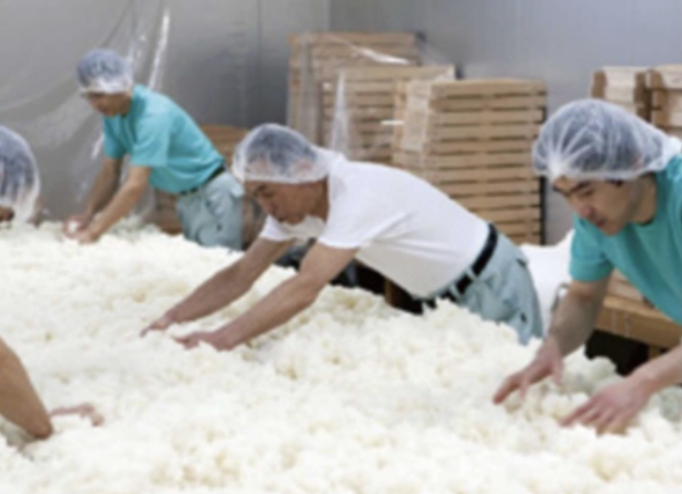
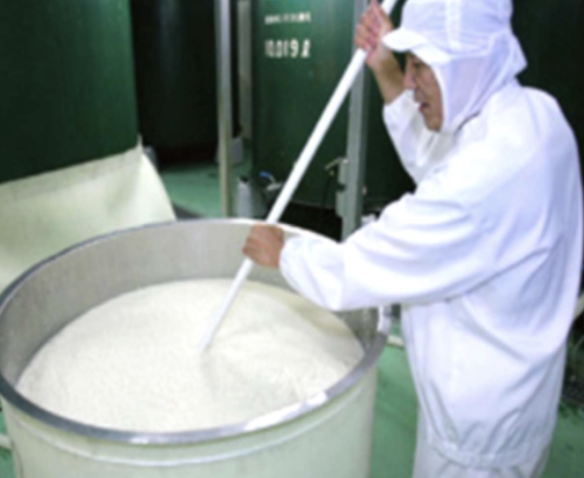
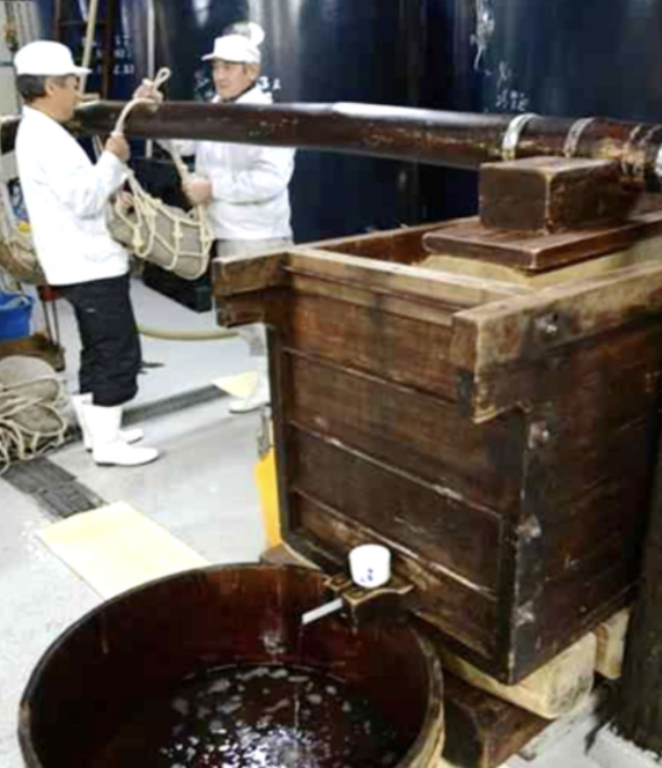
4. Sake production techniques
Japanese sake, particularly from the Harima region, stands out due to production methods that combine traditional craftsmanship and modern expertise. Mastery of fermentation and brewing is essential to reveal the finesse and typicity of this Harima sake.
Fermentation and brewing: the role of Koji and yeasts
Harima sake production relies on simultaneous saccharification and fermentation, using koji (rice inoculated with Aspergillus oryzae) to convert starch into fermentable sugars.
This process involves several key steps:
- Polishing and washing the rice.
- Inoculating with koji to develop the necessary enzymes.
- Gradual addition of yeast and Harima’s pure water for the main fermentation.
This traditional method creates sakes with complex and varied aromas, a balanced texture, and a refined mouthfeel, which are the hallmarks of Harima productions.
The rice polishing ratio plays a crucial role in the classification of Japanese sake.
Harima breweries: tradition and modernity
Breweries in Harima preserve historical know-how while integrating modern equipment to ensure consistent quality:
- Stainless steel tanks for precise temperature control.
- Gentle oxygenation techniques to enhance aroma profiles.
- Rigorous fermentation control to balance acidity, umami, and body.
Some breweries continue to use traditional artisanal methods (Kimoto), especially for limited editions or premium sakes, offering a unique balance between authenticity and consistency.
These techniques make Harima sake highly sought-after by enthusiasts and professionals alike, expressing both the purity of the terroir and the creativity of the brewers.
To discover more about Japanese sake, go read our special post to know everything about Japanese sake!
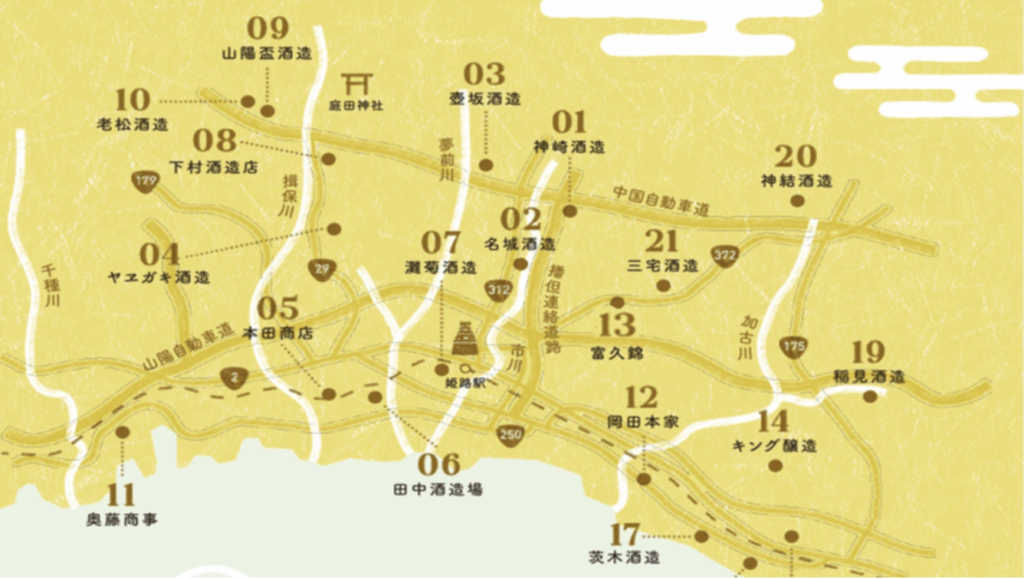
4. Sensory profile and tasting of 3 Harima Japanese Sakes
Harima sake offers a unique sensory experience, reflecting its terroir, rice variety, and artisanal craftsmanship. Understanding its aromatic and gustatory profile is essential to fully appreciate it, whether you are a professional or an informed enthusiast.
Château Shirasagi Tokubetsu Junmai 65 – Tanaka Shuzojo
- Rice: Yamada Nishiki, polished to 65%.
- Tasting profile: silky and creamy texture, with notes of pear, melon, yogurt, and anise, finishing clean and refined.
- Food pairings: pairs beautifully with sushi and sashimi, goat cheeses, poultry, and fennel-roasted sea bream.
Rairaku Daiginjo 35 – Ibaraki Shuzo
- Rice: Yamada Nishiki, polished to 35%, produced near the sea.
- Aromas: elegant and rich bouquet with cherry blossoms, cherry fruit, and apple.
- Palate: smooth and silky, with a crystalline clarity and no bitterness.
- Food pairings: ideal with seafood platters, lemon chicken tagine, rabbit dishes, or grilled fish.
Junmai Ginjo Genshu Seppikosan – Tsubosaka Shuzo
- Rice: Yamada Nishiki, polished to 60%, produced in the mountainous interior of Harima.
- Tasting profile: soft and rounded texture, with aromas of melon, strawberry, and cream, very low bitterness and astringency. Offers delicate richness and generous umami.
- Food pairings: complements shabu-shabu (Japanese hot pot), beef tataki, or vitello tonnato, enhancing both umami and richness.
Each of these sakes exemplifies the distinctiveness of Harima through its rice selection, polishing ratio, and terroir influence, offering an authentic and sophisticated tasting experience.

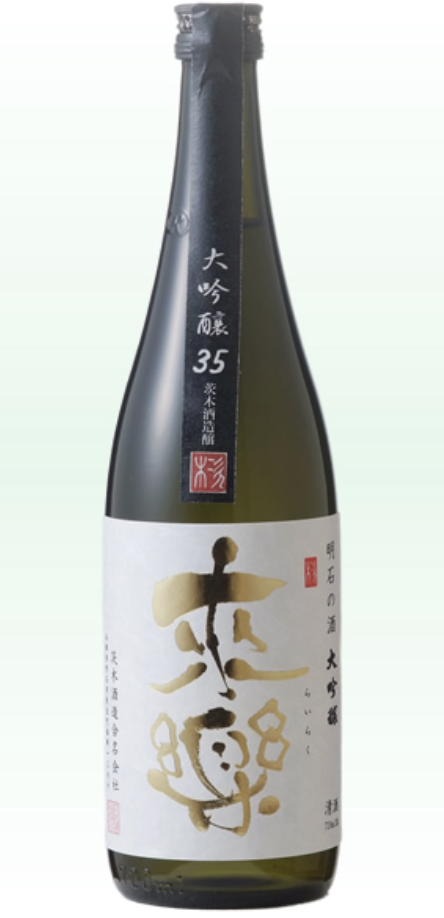

Professional Tasting Tips for Harima Sake
- Serving temperature: Serve the sake slightly chilled – 10–12°C for Ginjo and Daiginjo, 12–14°C for Junmai – to fully appreciate its aromatic profile.
- Visual evaluation: Observe the color and clarity to assess quality and style.
- Nose: Gently inhale to identify floral, fruity, and mineral notes.
- Palate: Take a small sip, let the sake evolve in your mouth, and analyze the texture, acidity, and finish.
- WSET systematic approach: Download the WSET tasting worksheet to enhance your skills and make professional tasting easier.
These tasting techniques help you develop your palate, refine your expertise, and better understand the unique characteristics of Harima sake, while optimizing your food and sake pairings.
If you want to understand why Japanese sake is gaining popularity in France, we have written a dedicated blog post explaining its appeal: Why the French Love Japanese Sake
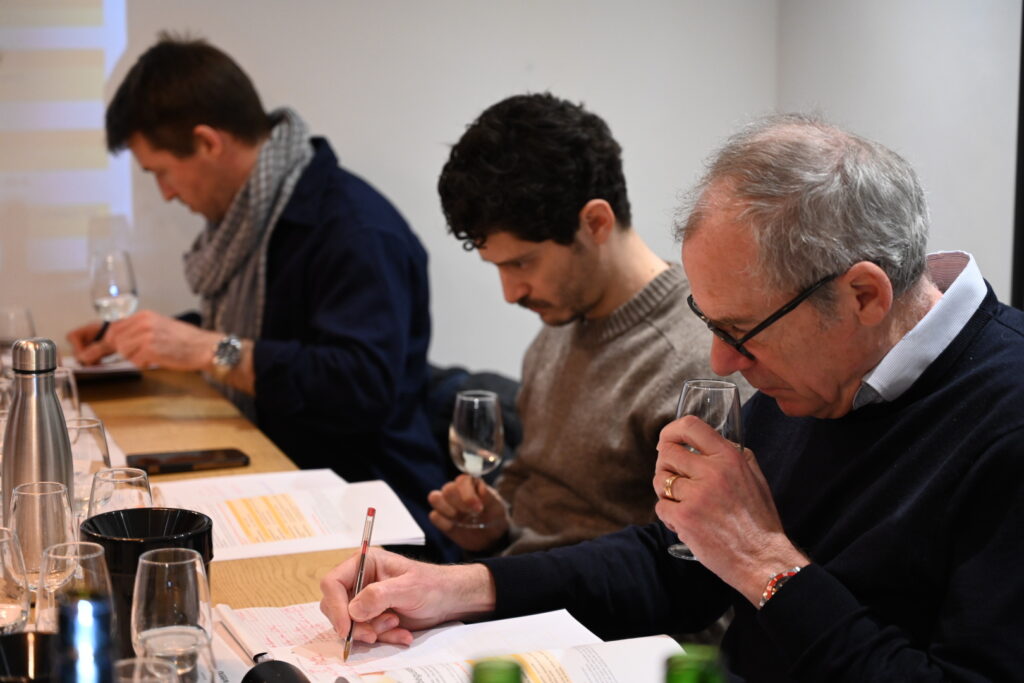
5. WSET Japanese Sake courses
Weeno offers WSET certified courses in Japanese sake, tailored for all levels of expertise, available in-person in Marseille or Paris, as well as online.
WSET Level 1 in Sake – Introduction to Japanese Sake
The Level 1 Sake Diploma is designed for beginners or professionals seeking a foundational understanding of sake.
This course covers the main sake styles, essential ingredients, production techniques, as well as proper serving and storage methods.
- Final exam: 30 multiple-choice questions, 45 minutes.
WSET Level 2 in Sake – Intermediate Knowledge
The Level 2 Sake Diploma is for those wishing to deepen their understanding of sake.
This course explores in detail the different sake styles, advanced production techniques, quality assessment criteria, and food and sake pairings.
- Final exam: 50 multiple-choice questions, 1 hour.
🎉 NEW: Launch of WSET Level 2 Japanese Sake
Weeno is proud to announce the launch of the WSET Level 2 Japanese Sake course!
This advanced program is designed for those who want to master the nuances of sake, understand terroir and production technique influences on sensory profiles, and develop skills in food and sake pairings.
In-person sessions in Marseille start in October 2025.
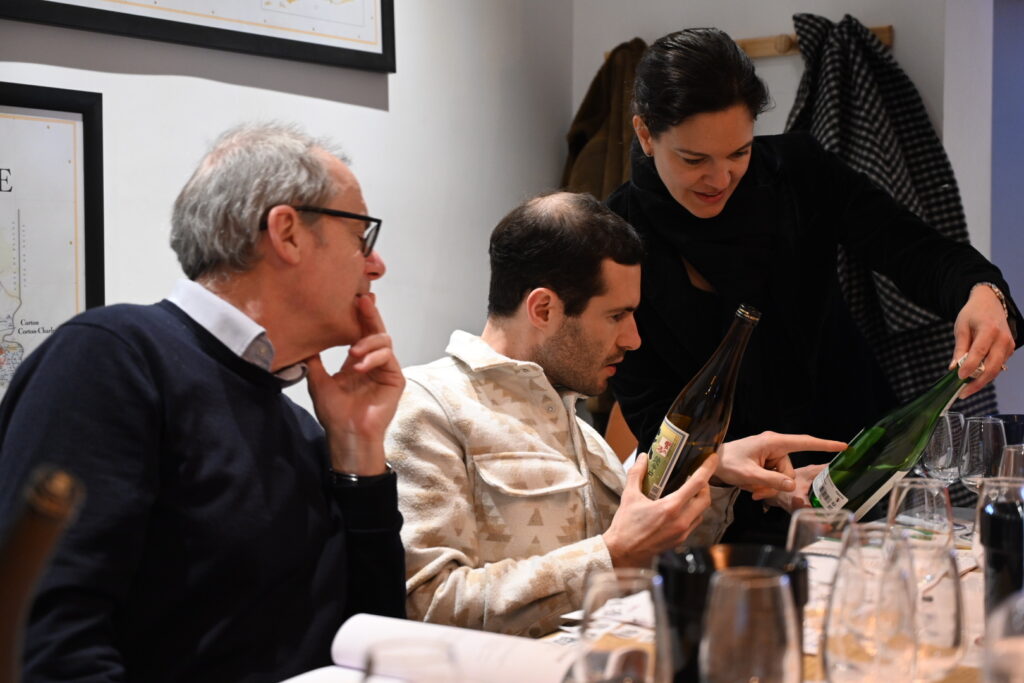
6. Why train on Japanese Sake from Harima and other regions with Weeno
Training on Japanese sake with Weeno goes beyond simple tasting: it is a powerful lever to develop your professional expertise, enhance your skills, and earn an internationally recognized certification in the world of sake.
WSET expertise and Sake training
Through Weeno’s specialized WSET Sake programs, you will learn to:
- Understand the terroir concept of sake, including the importance of water, rice, and climate on sake production.
- Master traditional and modern production techniques, including brewing, simultaneous fermentation and conversion, and the use of koji.
- Identify the different sake styles (Futsushu, Honjozo, Junmai, Ginjo, Daiginjo) and analyze their sensory and aromatic profiles.
- Explore specialty sakes: sparkling, Koshu, Nigori, Kimoto, Yamahai, and more.
Theoretical and practical training
- Theoretical courses: geography, terroir, raw materials, production methods, and sake classification.
- Hands-on workshops and tastings: apply your knowledge on a selection of representative sakes (12 tastings for WSET Level 1 Sake, 30 tastings for WSET Level 2 Sake), refine your palate, and analyze aromatic and textural nuances.
An engaging and interactive teaching approach
Weeno stands out for:
- Certified and experienced instructors: Learn from recognized sake professionals who share their passion and expertise.
- Interactive and practical classes: Learning includes experiments, practical exercises, and real-life application of knowledge.
- Carefully curated tastings: Structured tastings with high-quality sakes to effectively train for exams and refine tasting skills.
- Small groups (maximum 14 students): Encourages interaction between students and instructors.
Flexible formats for your schedule
Our courses are available:
- In-person in Paris and Marseille,
- Online, to learn from home at your own pace,
- With the possibility to take the exam in French or English depending on your level or professional goals.
Multiple sessions are offered each year, with registration opening several months in advance.
For more details on our online WSET courses, this article provides all the information you need!
Professional development
Training with Weeno allows you to:
- Enhance your skills in the trade of premium Japanese sake.
- Improve your sommelier and advisory expertise for both enthusiasts and professionals.
- Develop teaching skills to conduct sake courses, masterclasses, or professional workshops.
The Japanese sake market is rapidly growing, and understanding it (and knowing how to taste it) is a highly sought-after skill for professionals.
Training with Weeno will give you the keys to mastering this exceptional sake and transform your passion into a recognized professional competency.
Ready to dive into the world of Japanese sake?
Enroll now in Weeno’s WSET Japanese Sake courses and develop your expertise in this fascinating field.
➡️ Discover our specialized WSET Japanese Sake programs here: https://weenodrinksacademy.com/en/wset/wset-in-sake/
